Glimpses of the Rich Traditional Kerala Architecture
Kerala, the wonderful state in Southern India has a culture and tradition found nowhere in the rest of the country. Kerala Architecture is something need to be learned.
The same goes for the architecture in Kerala, where you can see buildings, palaces and monuments built with local resources and in perfect harmony with nature and climatic conditions.
It is worth noting that the materials used for constructing religious refuges were quite different from the materials used for building people’s homes.
Is this because Gods were considered mortals and humans were not? We leave that for you to figure out.
Meanwhile, we will go into a little deeper into Kerala Architecture and understand what makes the style of construction here different from the rest of the world.
Kerala architecture follows Thatchu Shasthra, a science of carpentry that governs the building/construction nuances. The most distinctive feature of Kerala architecture lies in the long, steep roofs that were built primarily to withstand the heavy monsoons.
According to the science of Vasthu, every structure on Earth has a life of its own and when built in the right way, following the rules, it is possible for one to enjoy harmony and success in life.
In a typical Kerala house, you will find a large home built within a large courtyard. Kerala houses were integrated with Nalukkettus (4 blocked structures), Ettukkettu (8 blocked structures) or Pathinarukkettu (16 blocked structures) depending on the affluence of the owner.
Kerala’s Vastu Sashthra has always been an enigma to the outside world. Millions of people come here every year to enjoy the treasures of Kerala and to marvel at the stunning architecture.
In this article, we will catch a glimpse of some of the unique constructions in Kerala, included here solely because of its uniqueness and importance towards the culture of the state.
Temples
Vadakkumnathan Temple, Thrissur
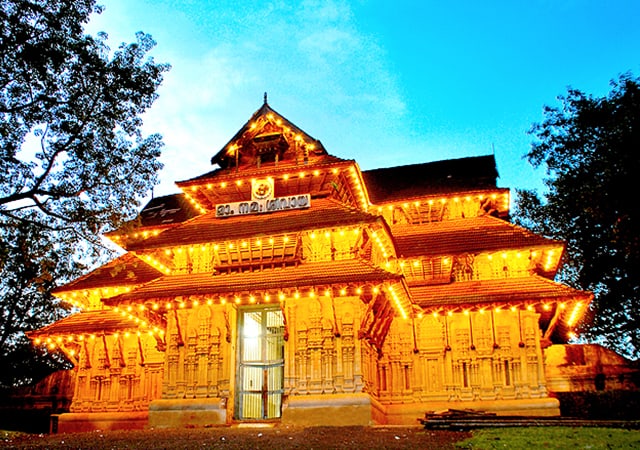
Image by
The enormous Vadakkumnnathan temple at Thrissur has an eye-catching architecture that has lured millions of people in its abode every year. It is a typical Kerala architectural style temple, built horizontally on a 9 acre-land and encompassed within an enormous stone wall.
It has a magnificient Koothambalam or the temple theatre with gopurams or gateways on the four sides. The Koothambalam displays excellent craftsmanship. The temple also boasts of rare mural paintings based on the events of the epic, Mahabharata.
Padhmanabhaswamy Temple , Thiruvananthapuram

Image by Reji via Flickr
Padhmanabhaswamy Temple at Thiruvananthapuram, the capital state of Kerala is the only hallmark of ancient Dravidian culture in the state.
The highlight is the 16th century gopuram, other eclectic sculptures, fascinating works of art carved in stone, mural paintings and the single stone platform (sanctum sanctorum of Lord Sree Vishnu, who resides here as Padmanabha Swamy). It is believed that the temple has nine entrances signifying the nine offices of the human body.
Madhur Temple, Kasaragod

Image by Sureshan via Wikimedia
The Madhur Temple in Kasargode is actually dedicated to Lord Ganesha, who is known as Srimadanantheshwara Siddhivinayaka here.
The temple is noted for its rich architecture that comes in the form of a unique three-tiered dome, copper-plated roofing against the backdrop of the flowing Madhuvanhini River. A cloistered court is another attraction of the temple. There is a cut mark made by Tipu Sultan who was initially bent on destroying the temple, but later changed his mind.
Guruvayoor Sri Krishna Temple, Thrissur
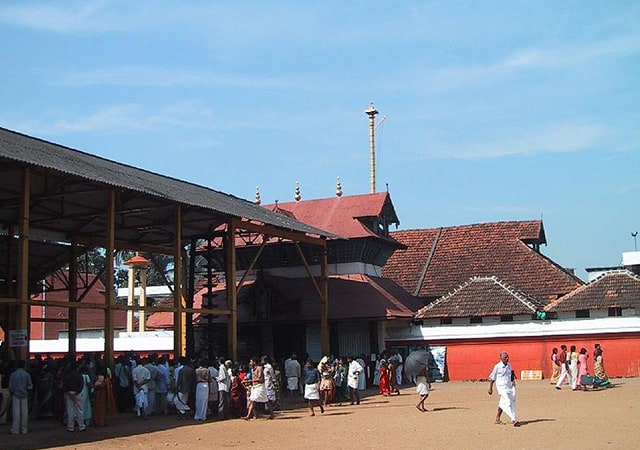
Image by Kuttix via Wikimedia
The Guruvayoorappan Temple at Thrissur is the abode of the favorite Lord of the Hindus, Lord Krishna.
The temple boasts of beautiful architectural splendors like the 24 feet high Deepasthambam that has 13 receptacles to hold wicks. Another wonder is the 70 feet high Dwijasthamba made of gold that is used for hoisting the temple flag during festivals.
Chottanikkara Bhagavathi Temple, Kochi
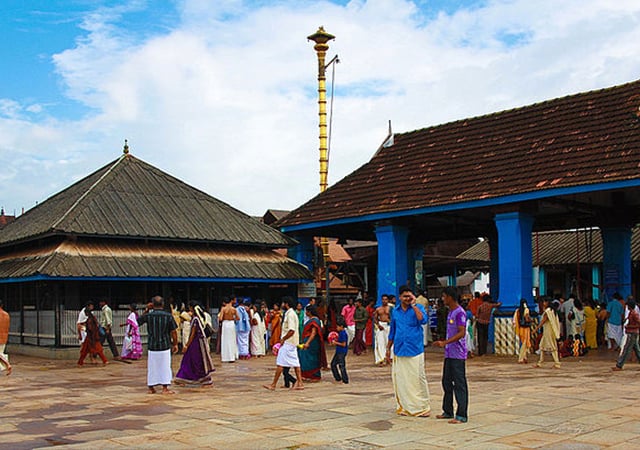
Image by Roney Maxwell via Wikimedia
Chottanikkara Bhagavathi Temple is a temple devoted to the Goddess in Hindi mythology and professes a fine architectural style belonging to the ancient Vishwakarma sthapathis. A unique feature of the temple is that it is spread over three districts and contains 393 shrines.
There are many more famous temples in Kerala with unique construction style and exceptional craftsmanship that will mesmerise everyone.
Palaces
Kanakakkunnu Palace, Thiruvananthapuram
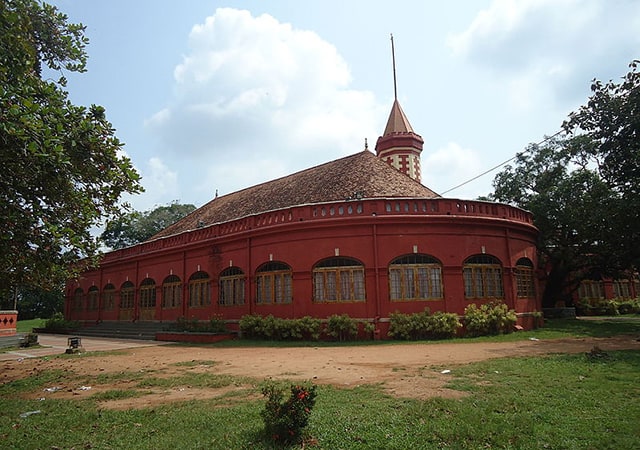
Image by via Wikimedia
The Kanakakkunnu Palace, situated in Thiruvananthapuram attracts hordes of history students and a heavy influx of tourists every year.
The palace is an important heritage place, and features exquisite architecture portraying the splendor of the kings of a bygone era. Most notable among them are the grand crystal chandeliers and the impressive furniture that speaks about the lavish lifestyle of the rulers.
Paliam Palace, Kochi
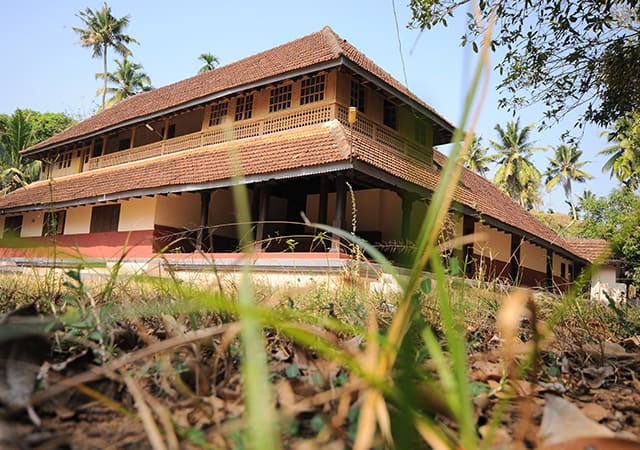
Paliam Palace and museum at Chendamangalam, North Parur in Ernakulam is famous for its mix of Kerala and Dutch architectural style.
The palace bears witness to several events in the history of Kerala, as it was the traditional home of the Prime Minister (known locally as Paliath Achan) to the Kings of Kochi. The palace is noted for its elaborately carved wooden staircases, balustrades and thick walls. While you are here, you must note the coolness of the interior as compared to outside.
Hill Palace, Kochi

If you have plenty of time to spare while at Kochi, do not forget to visit the Hill Palace at Thripunithura, Kochi.
The Hill Palace is renowned by the largest archaeological museum in the state with 49 building complexes all built in the traditional style within 52 acres of terraced lands, ponds and lawns. The Hill Palace is the perfect example of the classic Ettukkettu Kerala style architecture.
Forts
Jewish Synagogue, Kochi
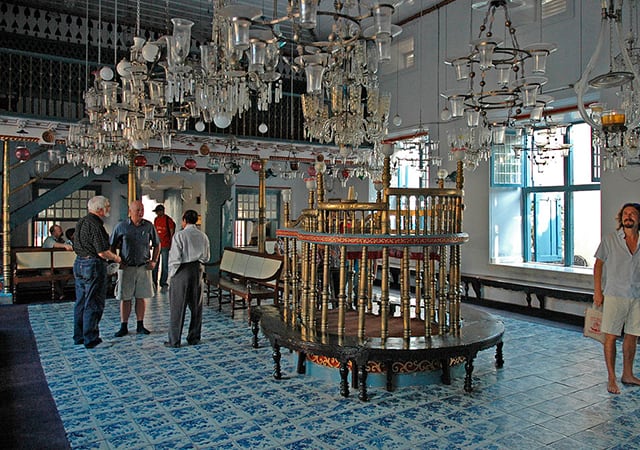
Image by via Wikimedia
The Jewish Synagogue is one of the oldest synagogues in India. The synagogue is located in Mattancherry, Kochi and holds the appeal and awe of a bygone era because it is architecturally very significant, showcasing Jewish traditions in the mid 1950s.
Belgian glass chandeliers, gold crowns, Scrolls of Law, brass railed pulpit and 10th century copper plates are worth watching here. Another highlight is the floor composed of Chinese hand painted tiles – each one is unique.
Thalassery Fort, Kannur

The Thalassery Fort in Kannur is a sheer architectural marvel, thanks to its massive and expansive structure. Built in a typical European style, the building bears testimony to the nuances of colonial imperialism.
An impressive feature about the fort is that it is built of quicklime, egg whites & sugar candy and it is located at a strategic location and hence, can withstand wars and invasions. There are plenty of secret tunnels and lovely carved doors that would take you right back to history.
Bekal Fort, Kasargode
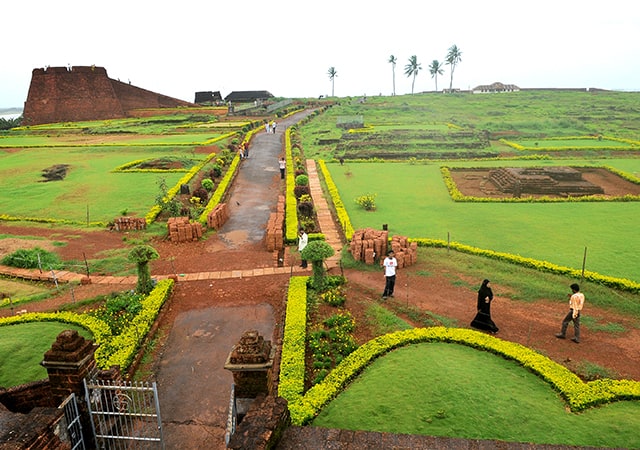
Renowned to be the largest fort in Kerala, Bekal Fort, built in the Bekal village in Kasargode, is the storehouse of rich history and culture.
Bekal village, poised in the backdrop of the Arabian seashore, is situated at a vantage point to ward off foreign attacks. The fort architecture bears testimony to the defense strategy of erstwhile rulers.
Tharavads
Tharavads are actually homes where the aristocracy resides and a lot of effort and architectural splendour go into building one. Let’s take a look at some of them.
Nilambur Kovilakam, Nilambur
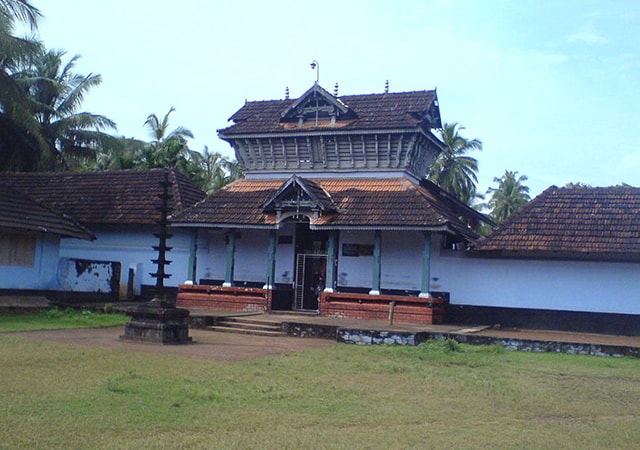
Image by Suhasvenu via Wikimedia
Located in Nilambur, Malappuram district, Nilambur Kovilakam or the Nilambur Kingdom plays the perfect rendition in its part as an architectural delight for visitors.
Built around 200 years ago, the presiding deity at the Tharavad is Vettokkoru makan, a form of Lord Shiva. The intricate wooden artwork and the beautiful frescoes add glory to the Kovilakam.
Varikkassery Mana, Palakkad
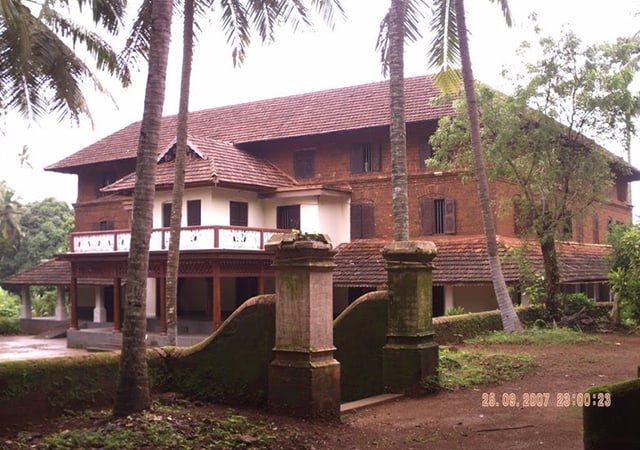
Image by Krishnan Varikkasseri via Wikimedia
A magnificent Nalukkettu structure that still speaks volumes about its past glory, Varikkassery Mana is located near Ottappalam in Palakkad district of Kerala.
It takes you right back to the splendid lives of aristocratic Namboothiri (Kerala Brahmins) family. This traditional manor has its fame spread far and wide due to its typical and well-maintained Kerala-style architecture.
British Residency, Kollam
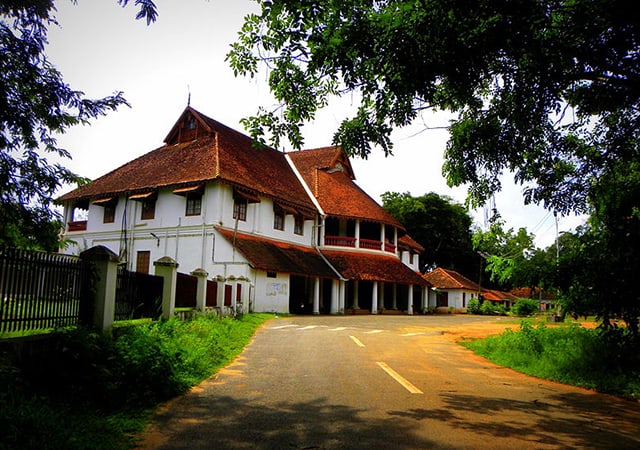
Image by Arunvrparavur via Wikimedia
At Kollam, you will find a typical Kerala style two-storied building known as British Residency (also called Government Guest House). The exquisite symmetry of the place, the sloping roof, the rounded front and the large gable decoration attracts people from far and wide.
You can still enjoy viewing the original Georgian furniture, Chinese pickle jars and the antique lithographs belonging to the East India company within its palatial halls. Right on top of the building, you will see a crown with a lion seated atop it, with the inscription Dieu et mon Droit (God and my right). You will also enjoy visiting the Edward Rose garden, another major attraction of the Residency,
Kerala Kalamandalam
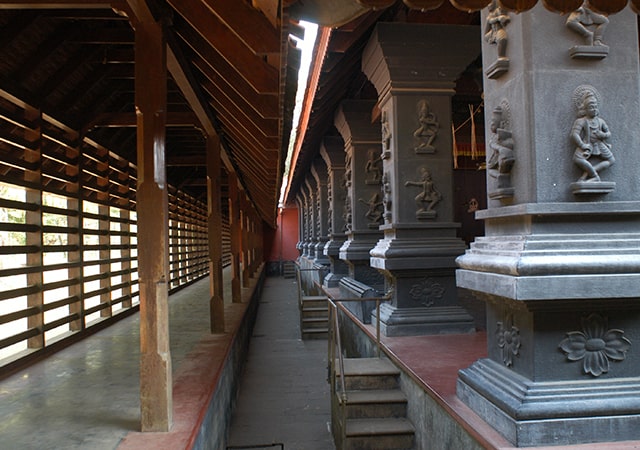
Kerala Kalamandalam at Thrissur is a true picture of architectural beauty. As you traverse along the quiet walls, you will hear them whispering the magnificence of a bygone era, while the rich culture and the synergy are all still kept intact here. Kerala Kalamandalam has become the cradle of Centre of Performing Arts, where a number of traditional art forms are taught.
Mosques
Malik Ibn Dinar Mosque, Kasaragode
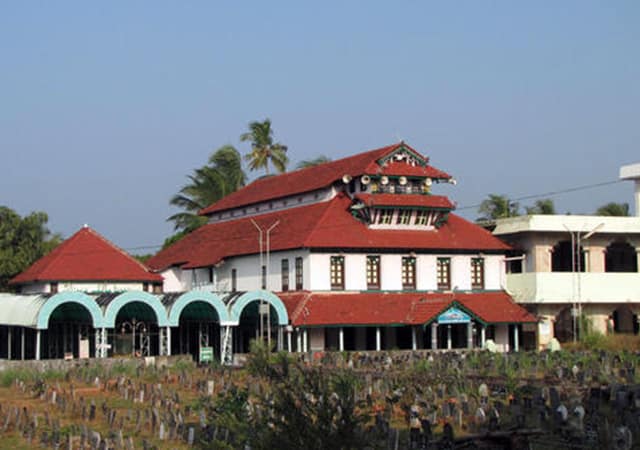
Image by
Believed to have been built by Malik Ibn Dinar, the propagator of Islam, you can see typical Islamic style architecture with a fusion of Kerala touch. The structure is actually a two-story building with flooring believed to have been made from marbles which Malik Ibn Dinar himself brought from Mecca.
Cheraman Juma Masjid, Thrissur

Image by Shahinmusthafa via Wikimedia
Cheraman Juma Masjid is at Kodungalloor, Thrissur district. It is the first ever mosque in India and one of the oldest in the world.
A noted feature about the architectural style of the mosque is that there are no minarets or no complex geometric patterns, but there is a profound Kerala style influence that you cannot miss. However, recently it has been renovated with a touch of the Arabic architectural style.
Erumeli Vavar Mosque
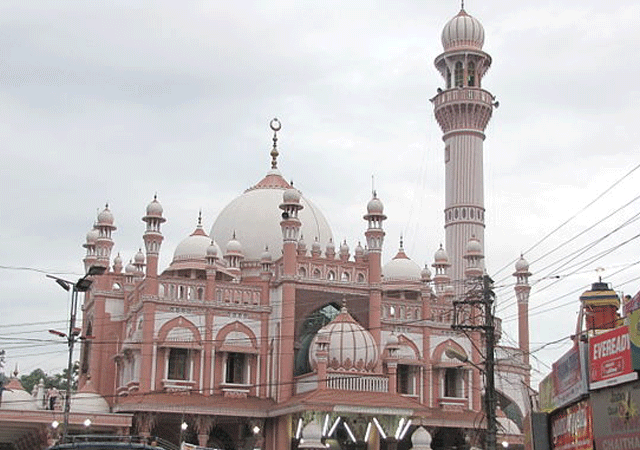
Image by Avsnarayan
A magnificent building and the epitome of secularism in India, the Erumeli Vavar mosque in Sabarimala is a refuge for both Hindu pilgrims and Muslims.
Situated very close to the Western Ghats, the mosque is surrounded by a backdrop of beautiful nature. The mosque has an outstanding architecture displaying the perfect blend of Kerala and Portuguese style.
Churches
St. Francis Church, Kochi
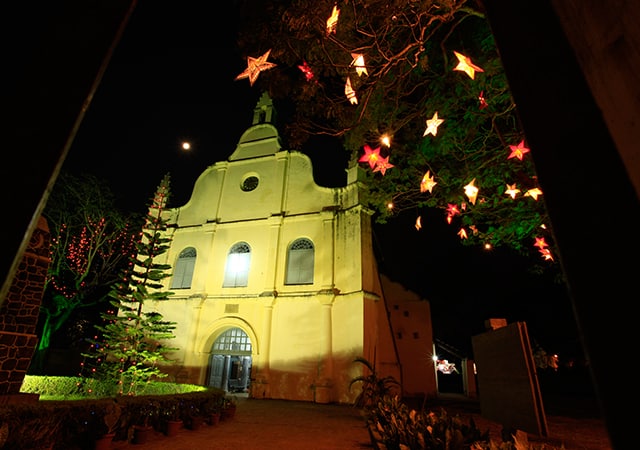
One of the oldest churches in India, St. Francis Church in Fort Kochi is a must see place near Kochi. It was built by the Europeans, hence dates back to 1503. It is one of the oldest landmarks in the history of the country and portrays the typical church architecture that was prevalent during that time. The church was first built in wood, and later in stone.
Basilica of Our Lady of Dolours, Thrissur
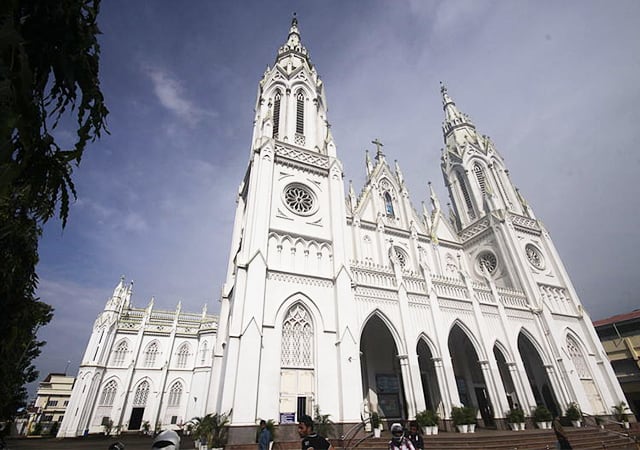
Image by Joseph Lazer via Wikimedia
It is the largest church in Asia and has an exquisite Gothic style architecture that would have you gazing in wonder at the effort it took to build such a magnificent structure. The main attraction of the church is definitely in its construction style and stunning interior decorations.
Kadamattom Church, Kochi
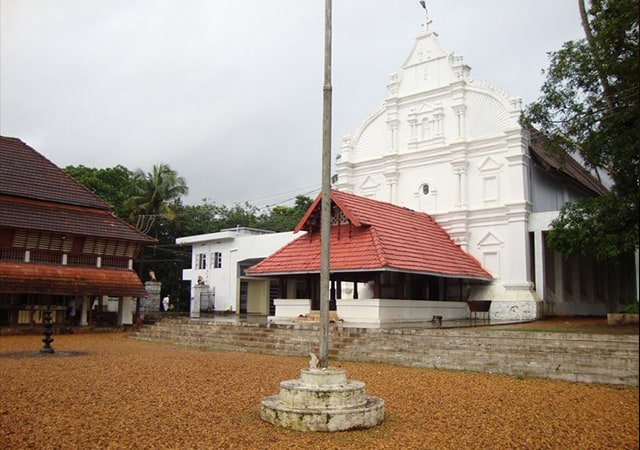
Image by
With its pure Kerala style architecture, Kadamattom Church is a fascinating building, and still holds the appeal of the 9th century charm. The church is one of the oldest in the country, and built by an East Syrian monk.
Other attractions of the church are its river backdrop and diverse flora and fauna.
Arthunkal Church, Alappuzha
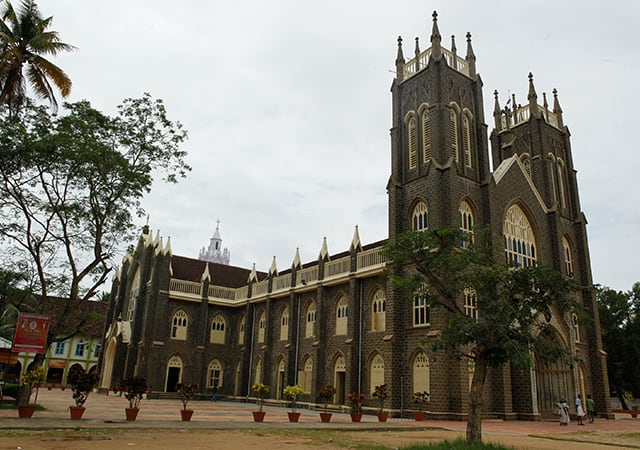
Integrated with the charm and beauty of Portuguese style, Arthunkal Church is quite different from what it was built with initially. In the early years, the church was built using wood and coconut leaves. Then it was later rebuilt and became the magnificent structure that we see today.
Here’s another architectural marvel that will leave you awestruck with wonder!
Indian Coffee House, Thiruvananthapuram
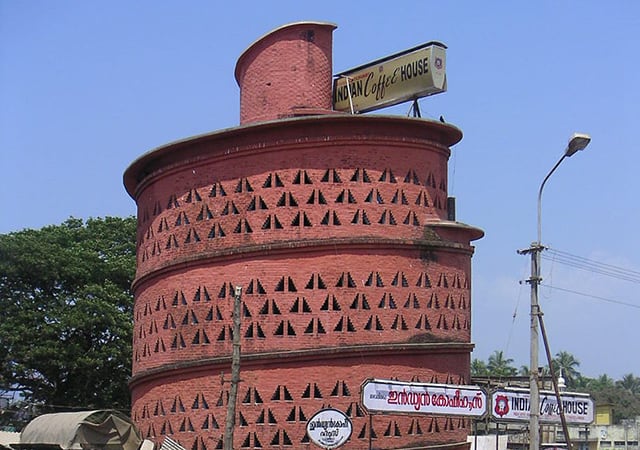
Image by Soman via Wikimedia
The famous British-born Indian architect Laurie Baker built the Indian Coffee House at Thampanoor in Thiruvananthapuram. The magnificent building was built in a perfect Neo Vernacular style and remains a prominent landmark of the city till date.
Wrap Up
The former rulers of Kerala – both foreign and domestic, have all left an indelible mark in the form of stunning buildings that can never be erased with time. These wonders of Kerala stand proud as the ultimate testimonials to the unique engineering, aesthetic skills and the craftsmanship of erstwhile masters of architecture.
To see these and many more such grand architectural structures in their full glory, make Kerala your next holiday destination!
If you like this post, please share!!


